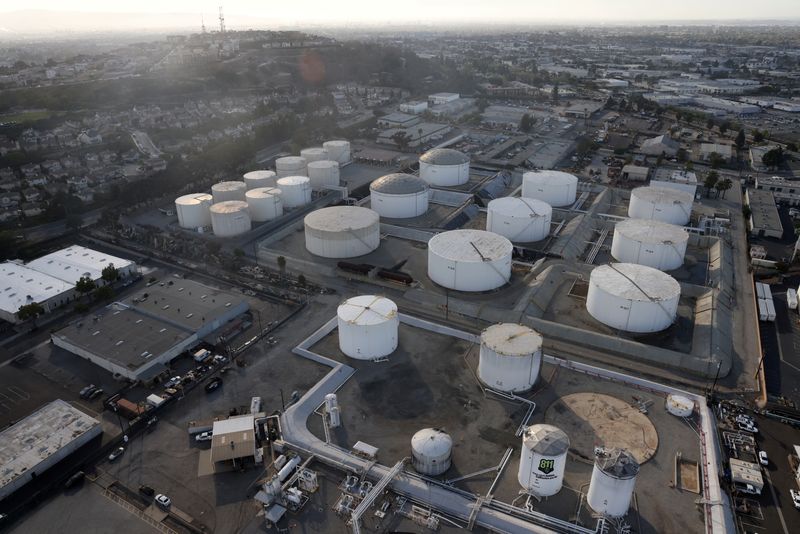
© Reuters. FILE PHOTO: Oil storage containers are seen, amid the coronavirus disease (COVID-19) pandemic, in Los Angeles, California, U.S., April 7, 2021. REUTERS/Lucy Nicholson/File Photo
By Jessica Jaganathan
SINGAPORE (Reuters) -Oil prices fell on Tuesday due to investor worries about demand after renewed restrictions were imposed in Europe and Asia amid a rise in coronavirus cases.
Brent crude oil futures eased by 34 cents, or 0.5%, to $74.05 a barrel by 0401 GMT, while U.S. West Texas Intermediate (WTI) crude futures fell by 35 cents, or 0.5%, to $70.94.
“Energy traders don’t want to bet against OPEC+ but all the short-term risks from Omicron to Fed tightening is proving to be very disruptive to the short-term outlook for oil prices,” said Edward Moya, senior analyst at OANDA.
“The virus spread across Europe is delivering a bigger hit than expected and when you calculate family gatherings for the holidays, the short-term outlook could get slashed over the next month.”
Governments around the world, including most recently Britain and Norway, were tightening restrictions to stop the spread of the Omicron variant.
At least one person has died in Britain after contracting the Omicron coronavirus variant, the first publicly confirmed death globally from the swiftly spreading strain.
In China, major manufacturing province Zhejiang is fighting its first COVID-19 cluster this year, with tens of thousands of citizens in quarantine and virus-hit areas suspending business operations, cutting flights and cancelling events.
The Asian Development Bank on Tuesday trimmed its growth forecasts for developing Asia for this year and next to reflect risks and uncertainty brought on by the Omicron coronavirus variant, which could also hamper oil demand.
Still, the Organization of the Petroleum Exporting Countries raised its world oil demand forecast for the first quarter of 2022 and stuck to its timeline for a return to pre-pandemic levels of oil use, saying the Omicron coronavirus variant would have a mild and brief impact.
Supply meanwhile is expected to increase with the largest U.S. shale basin’s output expected to surge to a record in January, according to a monthly forecast from the U.S. Energy Information Administration on Monday.
Source: Investing.com

























